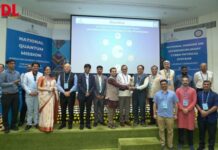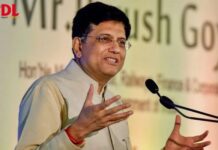India, with a critical mass of skilled English-speaking knowledge workers, a functioning democracy and a massive domestic market, has many of the key ingredients for seizing the opportunity for making a transition to a knowledge economy
By Jaydeep Saha, digital LEARNING Bureau
The trend towards a knowledge-based economy has emphasised the importance of universities as repositories of valuable human capital to help secure shares in the global market. The accelerating shift to high-technology and information technology economy requires sustained human resource development and training.
Driven by globalisation and pressures to teach and train knowledgeable, skilled and competitive professionals, universities face a huge challenge to increase access to higher education and improve the quality of higher education against the stark reality of decreasing resources.
Fundamental to the creation of qualified human resources is an accessible, effective and efficient higher education system, particularly when governments are counting on university graduates to be competitive in creating wealth for their respective countries. Universities are compelled to be innovative and lead by example in using cutting edge technology to meet these expectations.
One activity of the ICT for accessible, effective and efficient higher education project, with the support of the Japanese Funds-in-Trust, is to document case studies of innovative ICT practices in higher education in open and distance learning, blended learning, research and administration and management.
There are over 221 universities, 39 deemed universities plus seven open universities in India. Out of 9,703 colleges, 550 are engineering and technical colleges, 655 medical and 600 management institutions. The revolution in ICT has been the main stay of globalisation of markets and knowledge systems. Availability of internet based services and communications has allowed distances and barriers to be breached in real time and that too at lower costs than ever imaginable.
|
One of the major challenges for the higher education sector in India is the problem of innovation. There is a need to keep its curriculum / course content and pedagogy updated with the changing educational needs of the students, technological innovations, demographic and socio-economic changes and the consequent market transformations. The curriculum revisions run into bureaucratic bottlenecks; there is very limited use of ICT or multimedia, especially in public schools, although most children do personally use/access to internet related technologies in their daily lives. With rapid urbanisation, rural to urban demographic shift and increasing number of people from the rural sectors aspiring for higher education for their children and rise in employment in the secondary and tertiary sectors, the greatest challenge for the higher education sector in India will be to accommodate the increasing volumes of people aspiring for higher education. This can be achieved only through major infrastructural overhaul of the higher education sector in India. |
Choosing the right technological tools for school or country's needs is a vital step in ensuring the effective use of ICT in education. This section gives information about technologies that can be used in education and about challenges in using ICT in education.
Realising educational objectives of the “information age” requires integrating modern forms of information and communication technologies (ICT) into education. To do this effectively, education planners, principals, teachers, and technology specialists must make many decisions in the following areas: technical, training, financial, pedagogical and infrastructure requirements.
|
What are new-age challenges in the higher education sector? India being predominantly an agricultural and service sector based economies, their needs and requirements change very fast. The biggest challenge faced by the higher education sector in India is to keep pace with the same. Therefore the Universities are expected to update the curriculum as per the latest changes and also adopt a futuristic approach for the same. The youth too is not very seriously considering the subjects as per their interest for higher education. They are usually selected due to the peer pressure or herd mentality only for the sake of obtaining a degree. Traditionally the Universities focused more on the teaching aspect and less on the practical learning. With the industries raising concern on the product coming out of the Universities, they started changing their approach from theoretical to a combination of theoretical and practical. With the abundant information now available online, professors are using practical case studies to teach the students. The Universities are also using simulation techniques on how machines would behave in the factory scenario. The students are also encouraged to visit industry to experience the practical way of doing things. Though it is a challenge but the New Age Universities are slowly aligning to the needs and trying to overcome the problem. So that a quick solution to this problem be obtained it is very important that not just the handful of Universities but all of them should work together towards the objective. How can universities adopt a curricular approach which treats knowledge in a holistic manner and creates opportunities for different kinds of interfaces between disciplines? Unlike the education system in US, which is considered the best, Indian Education system is based on closed syllabus i.e., the option to design the course or learn about various other areas is not there. It is time now that we move out of the fixed curriculum pedagogy system and enter the flexible and independent system. Since the last two years, LPU has initiated the COP programmes in its campus. Under this, the students have an option to choose subjects as per their interest and liking under the guidance of a mentor. After successful experimentation, LPU is now using flexi credit system where the students can design 100% of the programme. An Engineering student can take up music or journalism, along with a minimum of subjects in the core areas required to attain the degree. LPU is the only University to have adopted this system in India and is sure that many universities would like to do the same ad make learning more holistic rather than focused towards producing degree holders. No one can replace the role of the Government in the education sector. But looking at the stats only 11% of the population has access to higher education compared to the global average of 25% therefore a lot number of seats and institutes need to be added without diluting the quality of education. This can happen only through government and private partnership. The government has already started its bit by asking the private players to open universities and inviting them for the PPP model but still there is a long way to go before the model can prove beneficial to the society.. |
This section looks at the tools themselves, from the satellites that link nations, to the machines that students work on in the classroom. It is intended to help educators, policy makers, planners, curriculum developers and others find their way through the often confusing maze of ICT tools, terms and systems.
India's emergence as one of the fastest growing economies on the globe, with the possibility of a double digit growth rate, poses a critical challenge of its preparedness to capitalise on opportunities on the horizon for its massive and growing work-force.
Economic growth, productivity improvement, innovations, job creation, poverty alleviation and social opportunities are interlinked and can be achieved only through entrepreneurship
More importantly, is the country looking towards creating new ways to harvest this promise of growth through appropriate educational and training infrastructure. In this overview we will look at the emerging prospects, the current status of India's higher education system, growing role of private institutions and challenges to emerging as a knowledge economy.
One of the drivers of India's growth, going forward is how well the professional class adapts to emerging opportunities in the new India. Historically, Indians have been reasonably risk-averse, preferring salaried jobs rather than take the plunge into doing something on their own. These days, the IIM graduate taking the entrepreneurial road is still the exception than the rule.
The reasons why so few of our qualified people take the plunge are manifold. First, there is the issue of financial safety. Most of us who come from middle class backgrounds simply do not have sufficient funds to take risk, particularly when there is no financial back up. Family commitments can also intervene and diminish risk-taking capabilities, including children's education, parents' medical and retirement worries.
Surprisingly, education can often become a handicap. You have more to lose when you can get a job in a good investment bank or consulting firm or a leading corporate. And, therefore, the safer path often seems more attractive.
Secondly, many communities and societies do not have a risk-taking culture; it's simply not built into their cultural DNA. Plus there is no family or community knowledge or network of how to go about starting a new business or the issues involved in doing so.
Equally, there are other communities where risk-taking and starting new businesses are in fact the norm and the expected thing to do. But these communities are fewer than we need.
India's culture of promoters is also unique. Banks require personal guarantees, private equity investors need there to be a strong promoter/manager and investors need a prominent face. All this militates against a professional set-up and reinforces the need to put you as the entrepreneur even more on the line. A number of people could be, and are, uncomfortable taking on this added burden.
This is a shame. To broadbase our growth, India needs an army of entrepreneurs. New businesses create new jobs and increase the value added in the economy. Profitable businesses contribute to enhanced tax collections and make the economy more efficient and streamlined while creating new and unique opportunities for growth. Over time, some of these firms could globalise and become world leaders in their respective areas.
Loss of primacy of universities in the higher education sector, erosion of autonomy, undermining of undergraduate education, growing distance between knowledge areas and isolation of universities from real world outside are some of the problems that characterise growth of Indian higher education.
Entrepreneurship has become an integral part of higher education as it primarily aims at imparting entrepreneurial qualities to enable the products of higher education to be job providers rather than job seekers.
An entrepreneurship development programme has to be conducted on a regular basis. India has been one of the best performers in the world economy during the past few years. India is uniquely positioned to reap the benefits of its economic gains by forging policies and strategies for effective use of knowledge to increase the overall productivity of the economy and benefit its own population.








 Ranjana Mukhopadhyaya, PhD. (Tokyo University), Associate Professor, Japanese Studies, Department of East Asian Studies, University of Delhi
Ranjana Mukhopadhyaya, PhD. (Tokyo University), Associate Professor, Japanese Studies, Department of East Asian Studies, University of Delhi Ashok Mittal, Chancellor, Lovely Professional University, talks about the modern day needs, challenges and solutions in higher education
Ashok Mittal, Chancellor, Lovely Professional University, talks about the modern day needs, challenges and solutions in higher education















